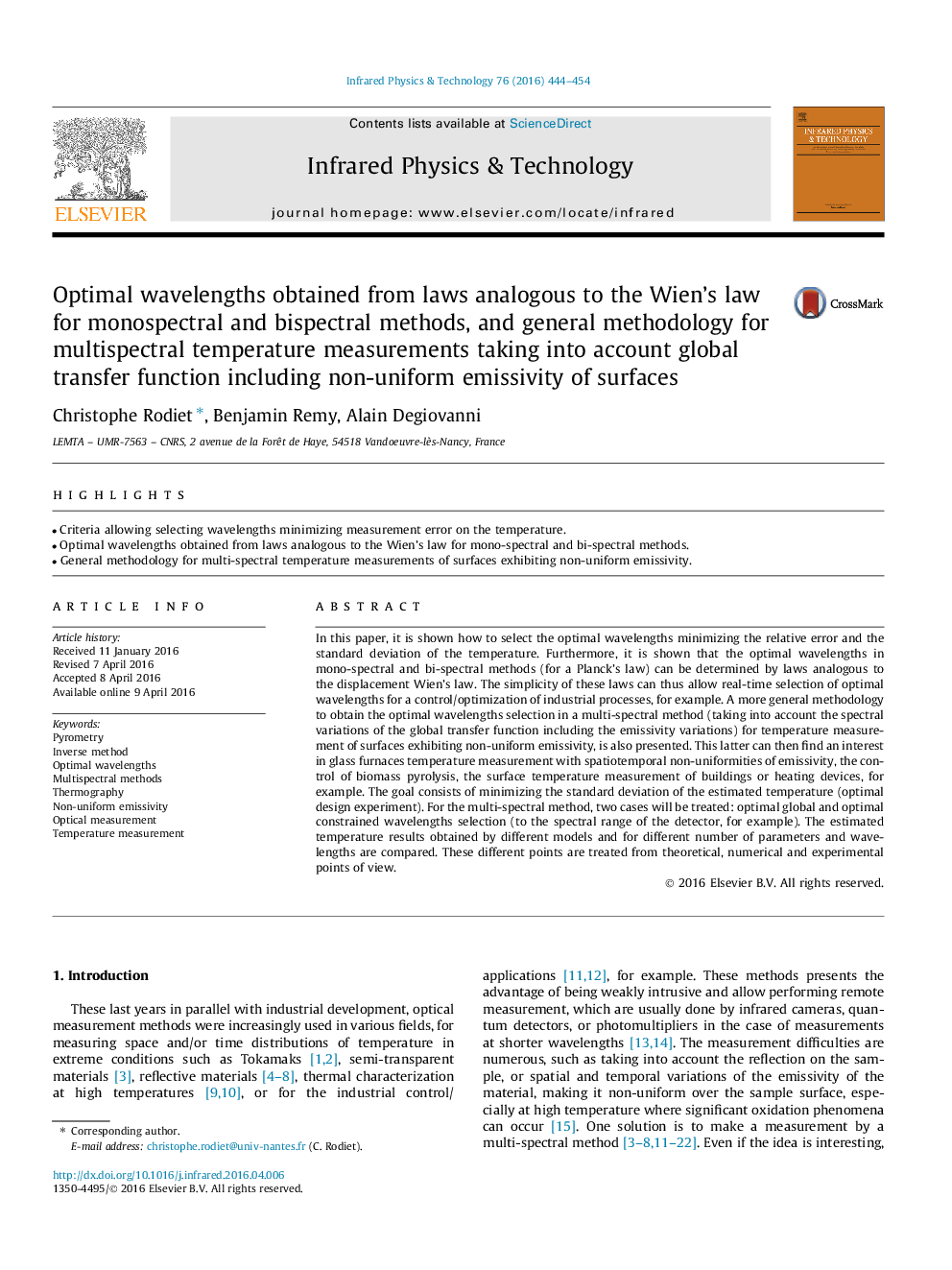| Article ID | Journal | Published Year | Pages | File Type |
|---|---|---|---|---|
| 8146462 | Infrared Physics & Technology | 2016 | 11 Pages |
Abstract
In this paper, it is shown how to select the optimal wavelengths minimizing the relative error and the standard deviation of the temperature. Furthermore, it is shown that the optimal wavelengths in mono-spectral and bi-spectral methods (for a Planck's law) can be determined by laws analogous to the displacement Wien's law. The simplicity of these laws can thus allow real-time selection of optimal wavelengths for a control/optimization of industrial processes, for example. A more general methodology to obtain the optimal wavelengths selection in a multi-spectral method (taking into account the spectral variations of the global transfer function including the emissivity variations) for temperature measurement of surfaces exhibiting non-uniform emissivity, is also presented. This latter can then find an interest in glass furnaces temperature measurement with spatiotemporal non-uniformities of emissivity, the control of biomass pyrolysis, the surface temperature measurement of buildings or heating devices, for example. The goal consists of minimizing the standard deviation of the estimated temperature (optimal design experiment). For the multi-spectral method, two cases will be treated: optimal global and optimal constrained wavelengths selection (to the spectral range of the detector, for example). The estimated temperature results obtained by different models and for different number of parameters and wavelengths are compared. These different points are treated from theoretical, numerical and experimental points of view.
Related Topics
Physical Sciences and Engineering
Physics and Astronomy
Atomic and Molecular Physics, and Optics
Authors
Christophe Rodiet, Benjamin Remy, Alain Degiovanni,
